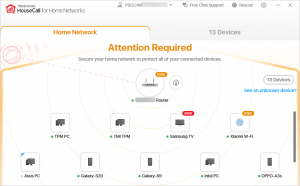Red Hat Responds to Zombieload v2
Three Common Vulnerabilities and Exposures (CVEs) opened yesterday track three flaws in certain Intel processors, which, if exploited, can put sensitive data at risk.
Of the flaws reported, the newly discovered Intel processor flaw is a variant of the Zombieload attack discovered earlier this year and is only known to affect Intel’s Cascade Lake chips.
Red Hat strongly suggests that all Red Hat systems be updated even if they do not believe their configuration poses a direct threat, and it is providing resources to their customers and to the enterprise IT community.
The three CVEs are:
- CVE-2018-12207 – Machine Check Error on Page Size Change
- CVE-2019-11135 – TSX Asynchronous Abort
- CVE-2019-0155 and CVE-2019-0154 – i915 graphics driver
CVE-2018-12207
Red Hat rates this vulnerability as important. It is a vulnerability that could allow a local and unprivileged attacker to bypass security controls and cause a system-wide denial of service.
The hardware flaw was found in Intel microprocessors and is related to the Instruction Translation Lookaside Buffer (ITLB). It caches translations from virtual to physical addresses and is intended to improve performance. However, a delay in invalidating cached entries after cache page changes could lead to a processor using an invalid address translation causing a machine check error exception and moving the system into a hang state.
This kind of scenario could be crafted by an attacker to take a system down.
CVE-2019-11135
Red Hat rates this vulnerability as moderate. This Transactional Synchronization Extensions (TSX) Asynchronous Abort is a Microarchitectural Data Sampling (MDS) flaw. A local attacker using custom code could use this flaw to gather information from cache contents on the processor and processors that support simultaneous multithreading (SMT) and TSX.
CVE-2019-0155, CVE-2019-0154
Red Hat rates the CVE-2019-0155 flaw as important and the CVE-2019-0154 as moderate. Both flaws are related to the i915 graphics driver.
CVE-2019-0155 allows allows an attacker to bypass conventional memory security restrictions, allowing write access to privileged memory that ought to be restricted.
CVE-2019-0154 could allow an local attacker to create an invalid system state when the Graphics Processing Unit (GPU) is in low power mode, leading to the system becoming inaccessible.
The only affected graphics card affected by CVE-2019-0154 is on the i915 kernel module. The lsmod command can be used to indicate vulnerability. Any output like that shown below (i.e., starting with i915) indicates that this system is vulnerable:
$ lsmod | grep ^i915 i915 2248704 10
Additional resources
Red Hat has provided details and further instructions to its customers and others in the following links:
https://access.redhat.com/security/vulnerabilities/ifu-page-mce
https://access.redhat.com/solutions/tsx-asynchronousabort
https://access.redhat.com/solutions/i915-graphics
READ MORE HERE



